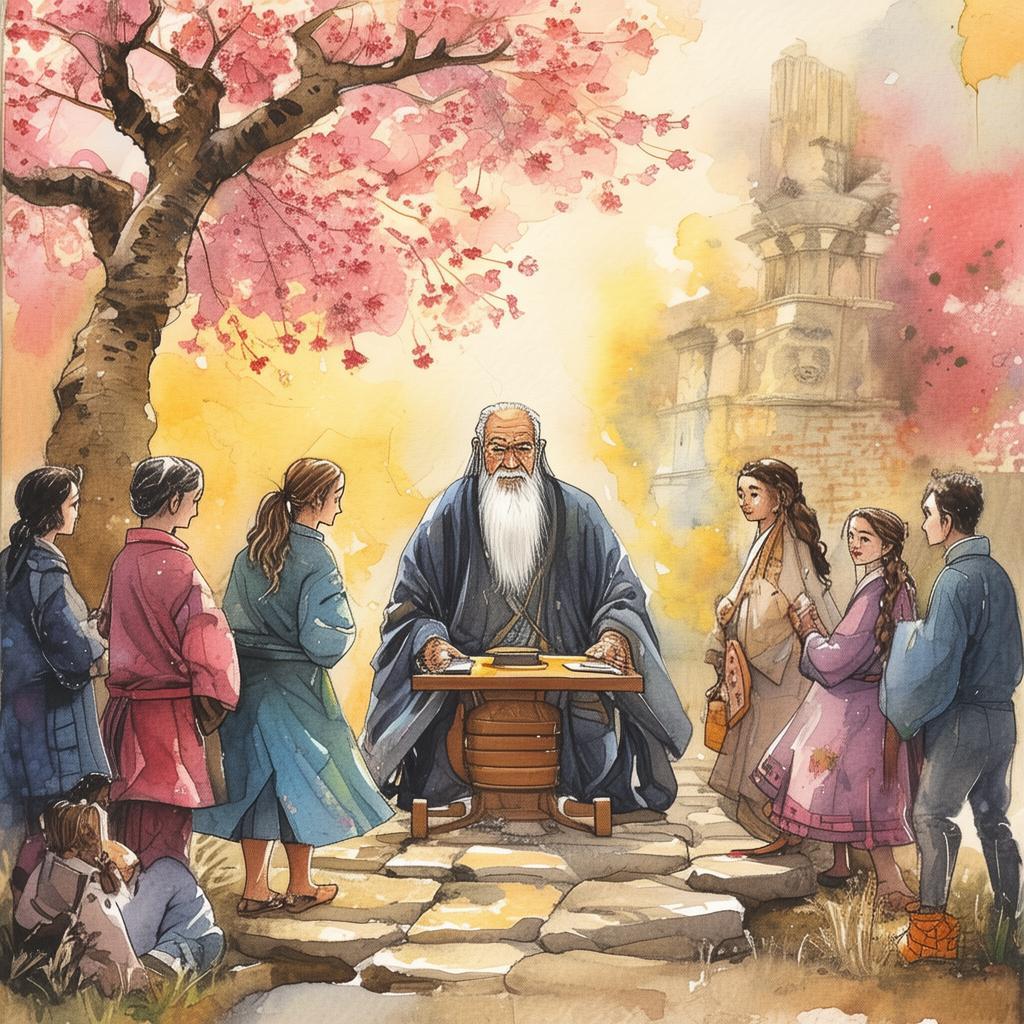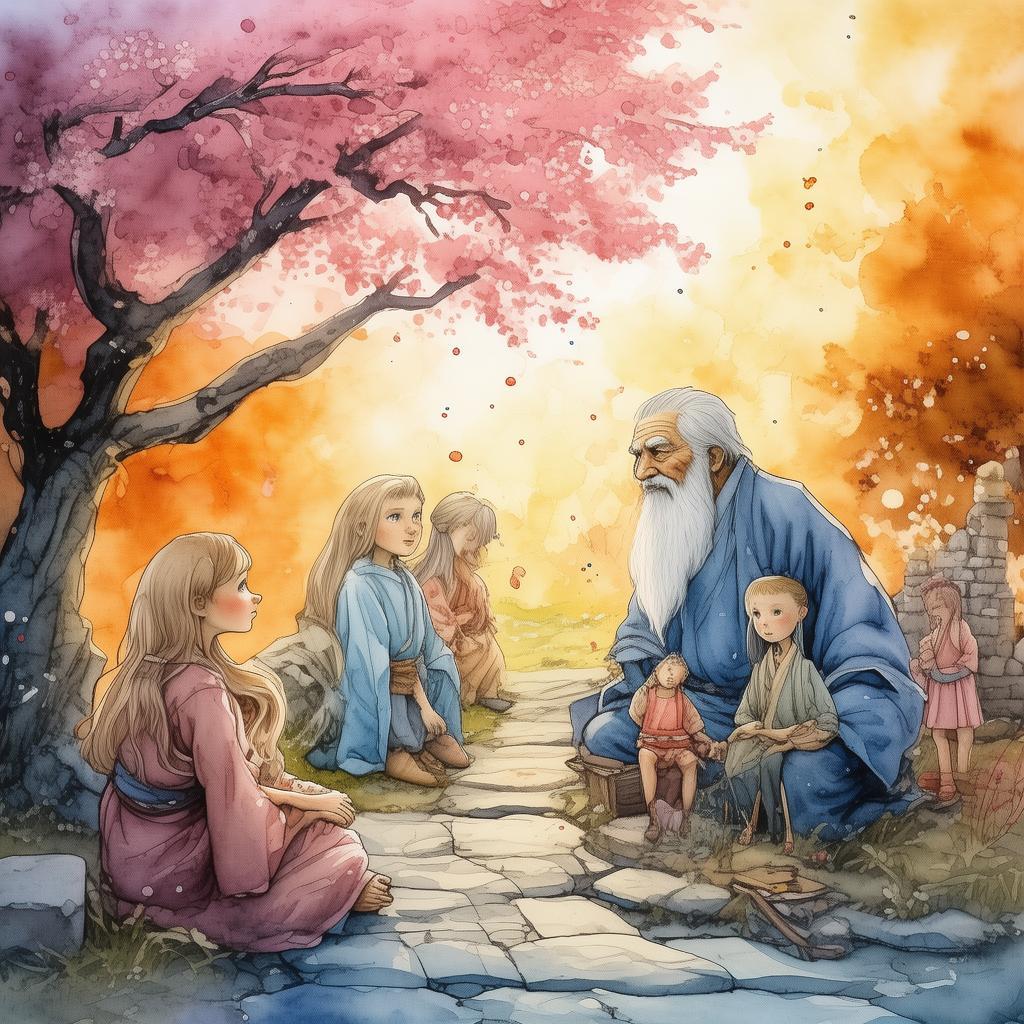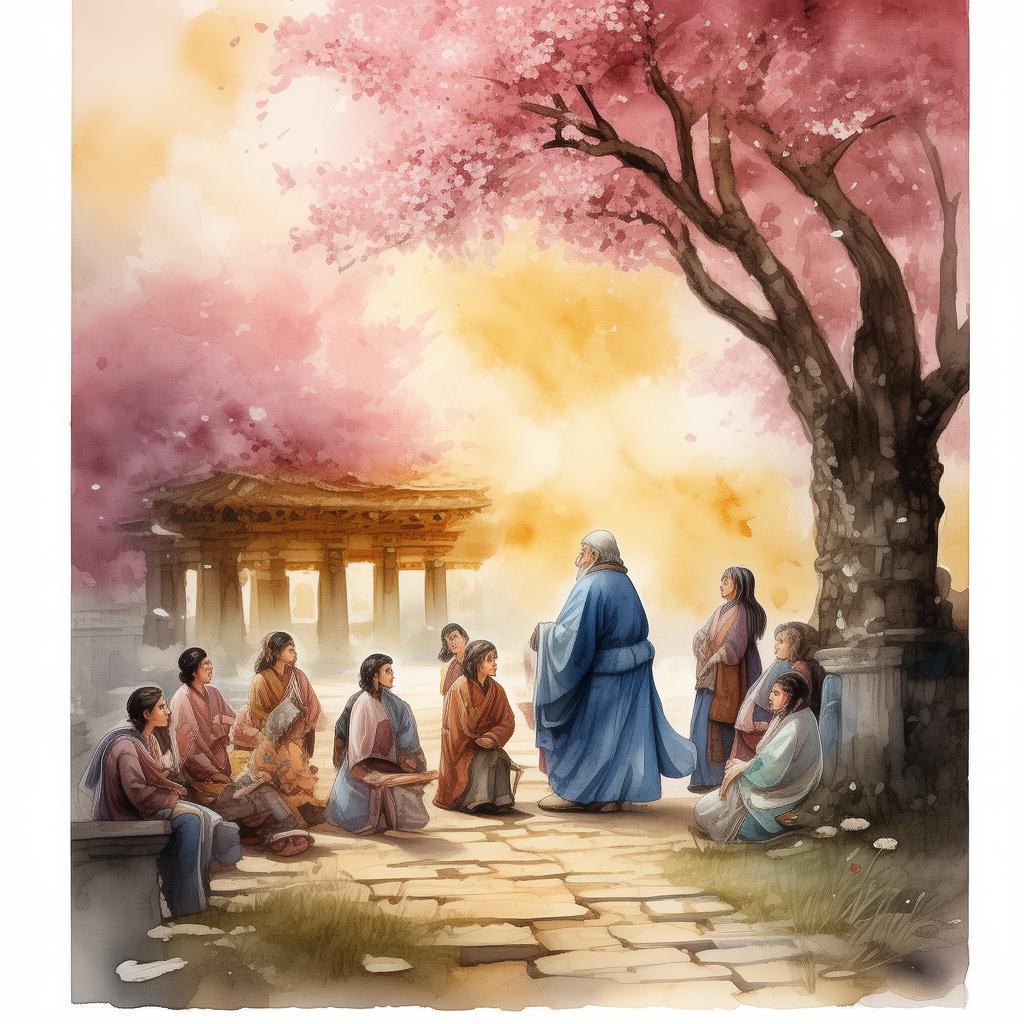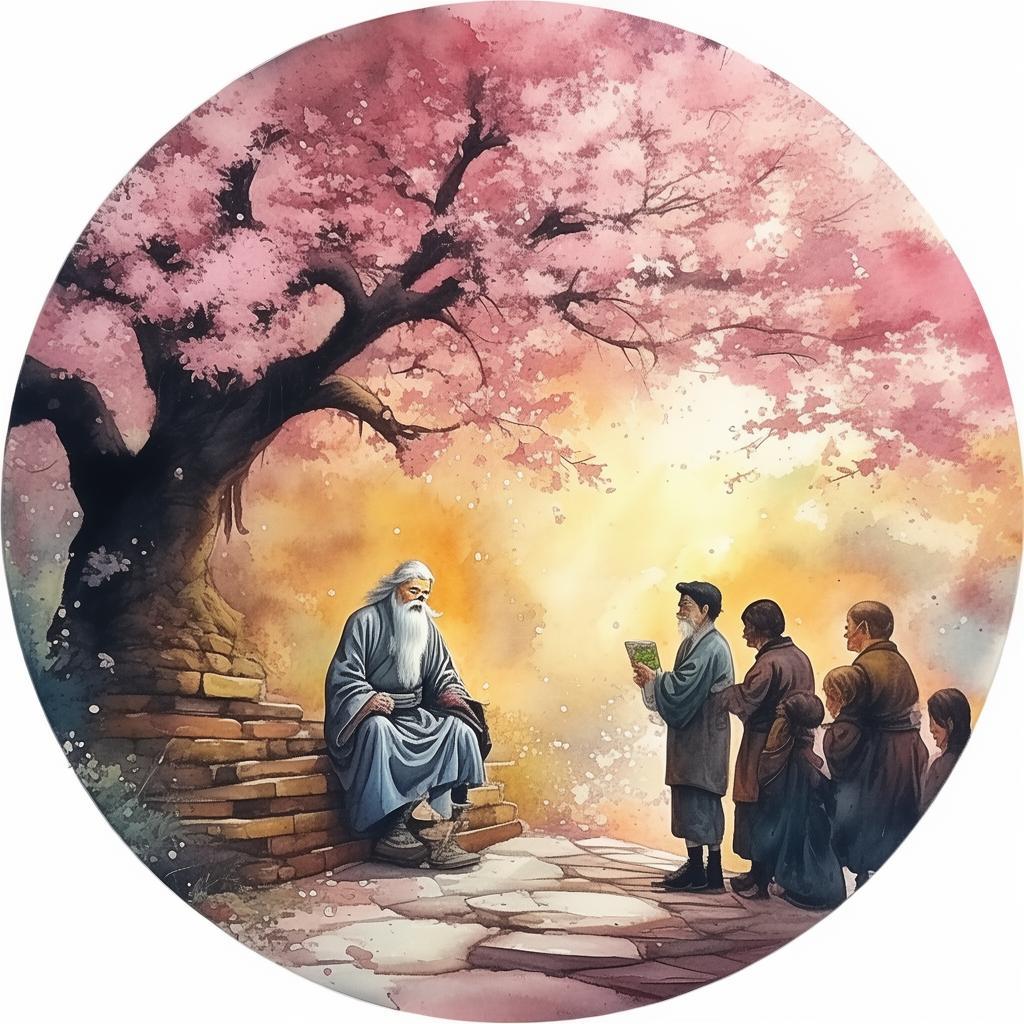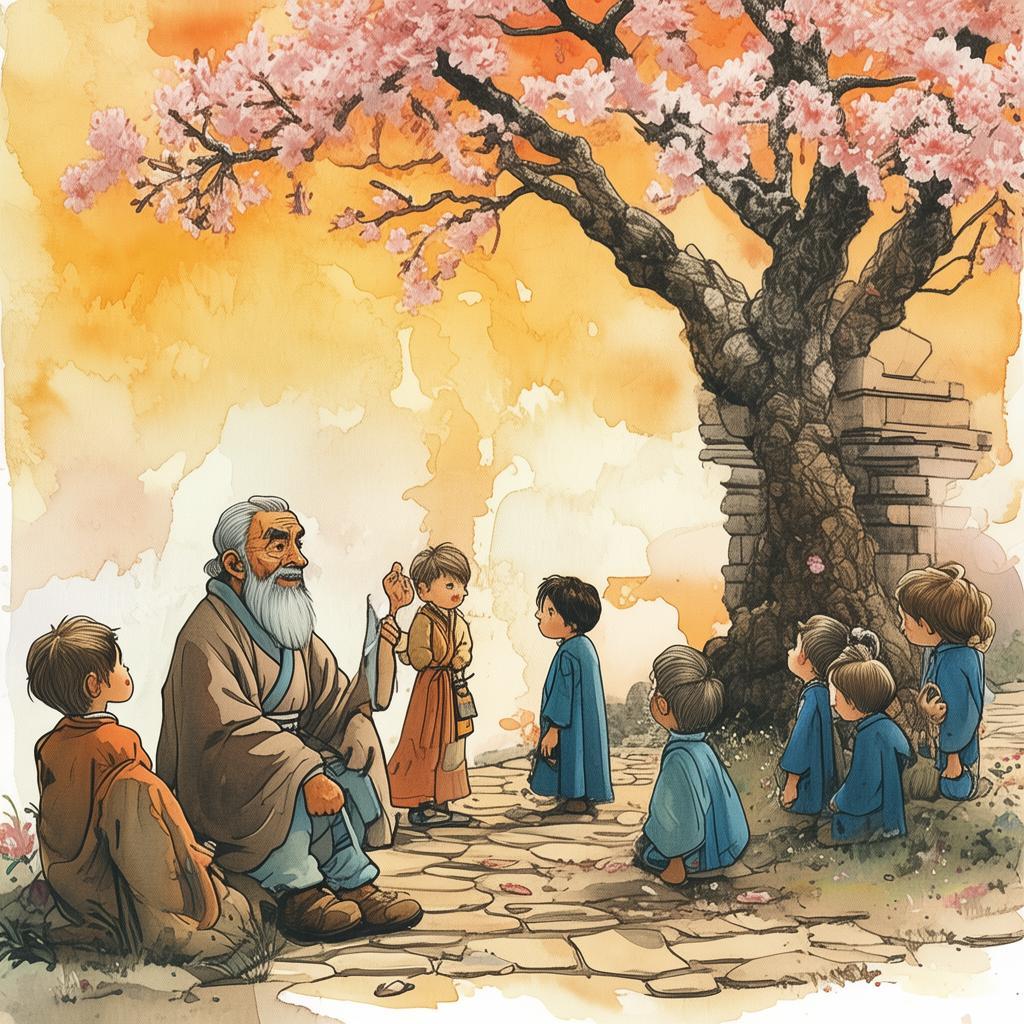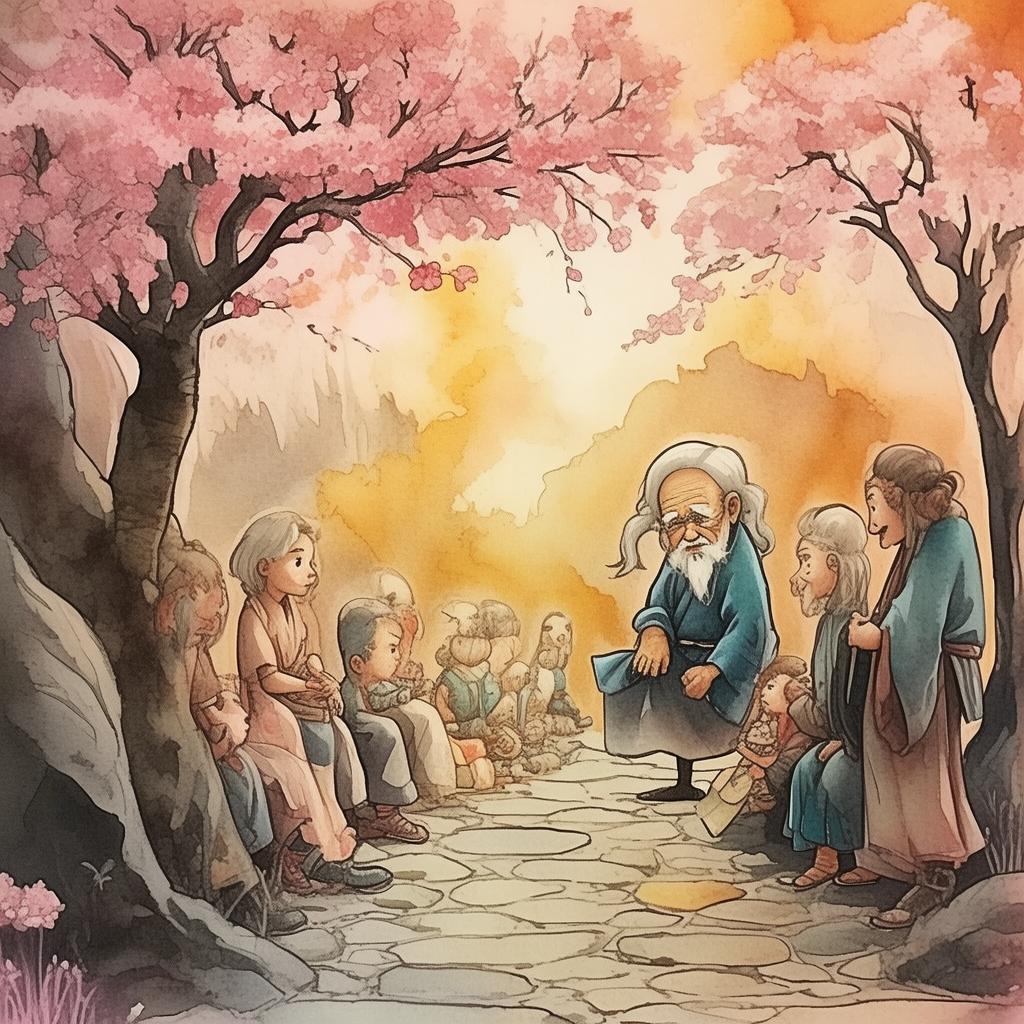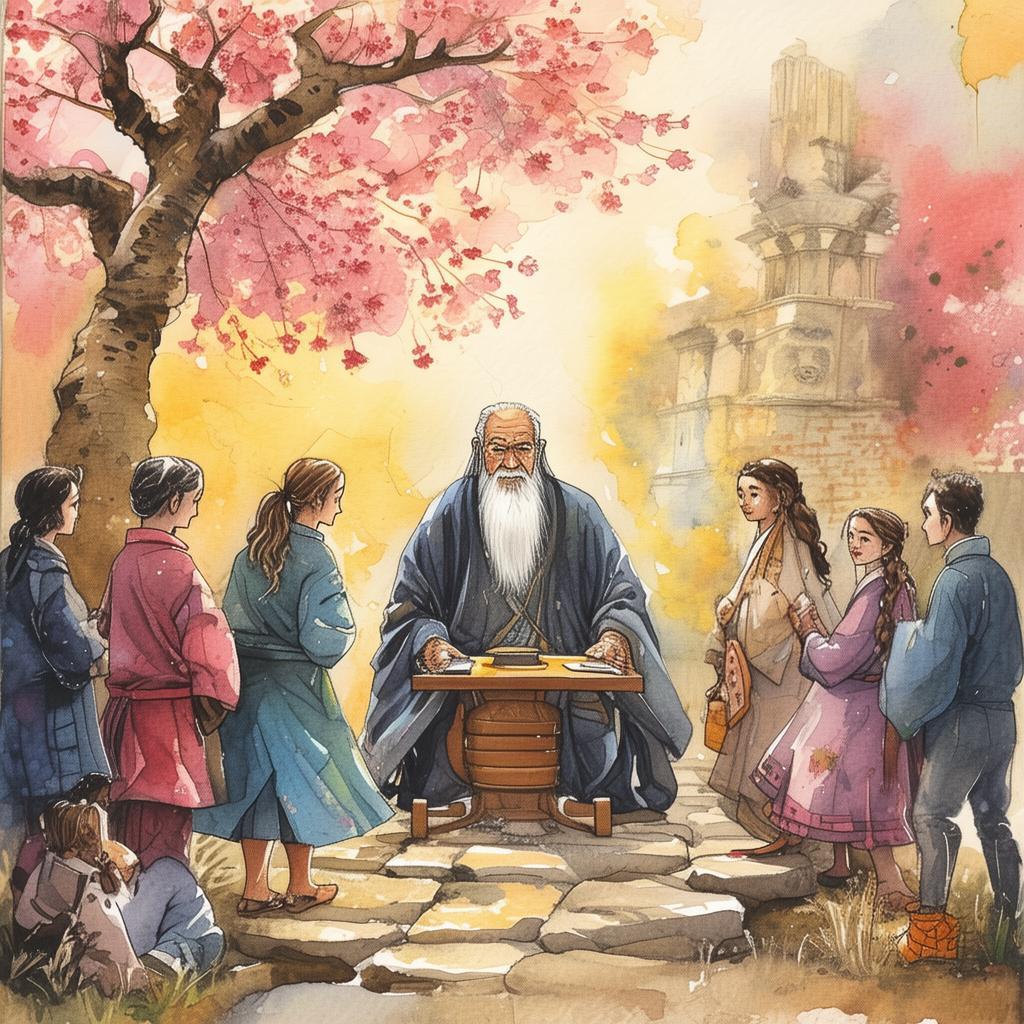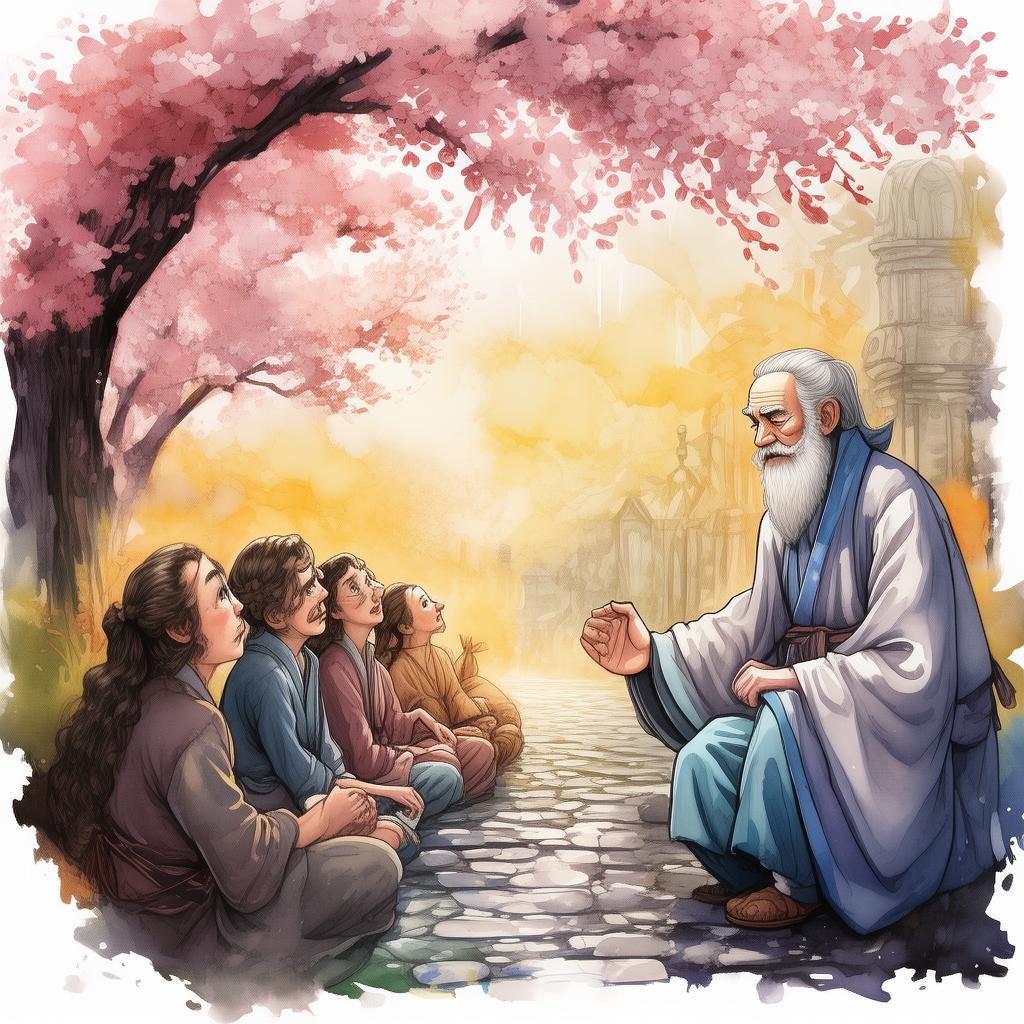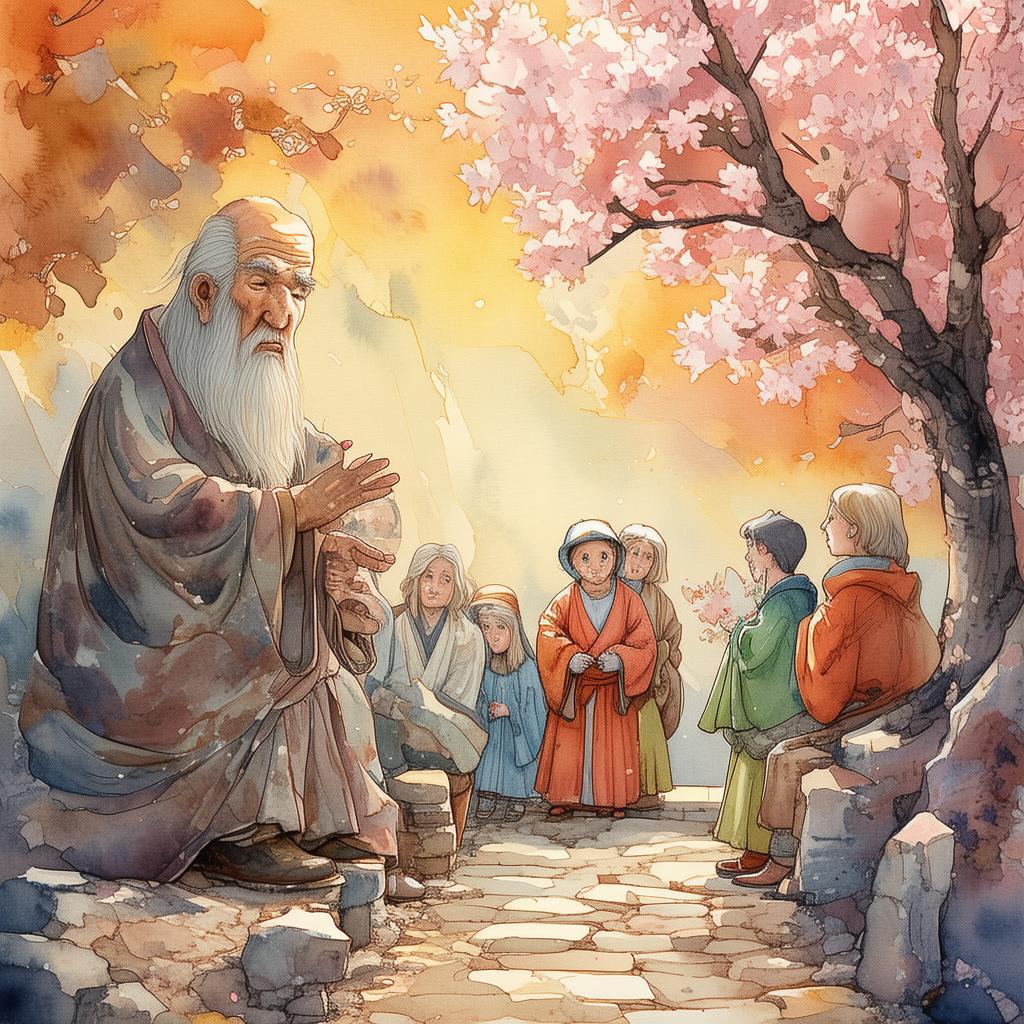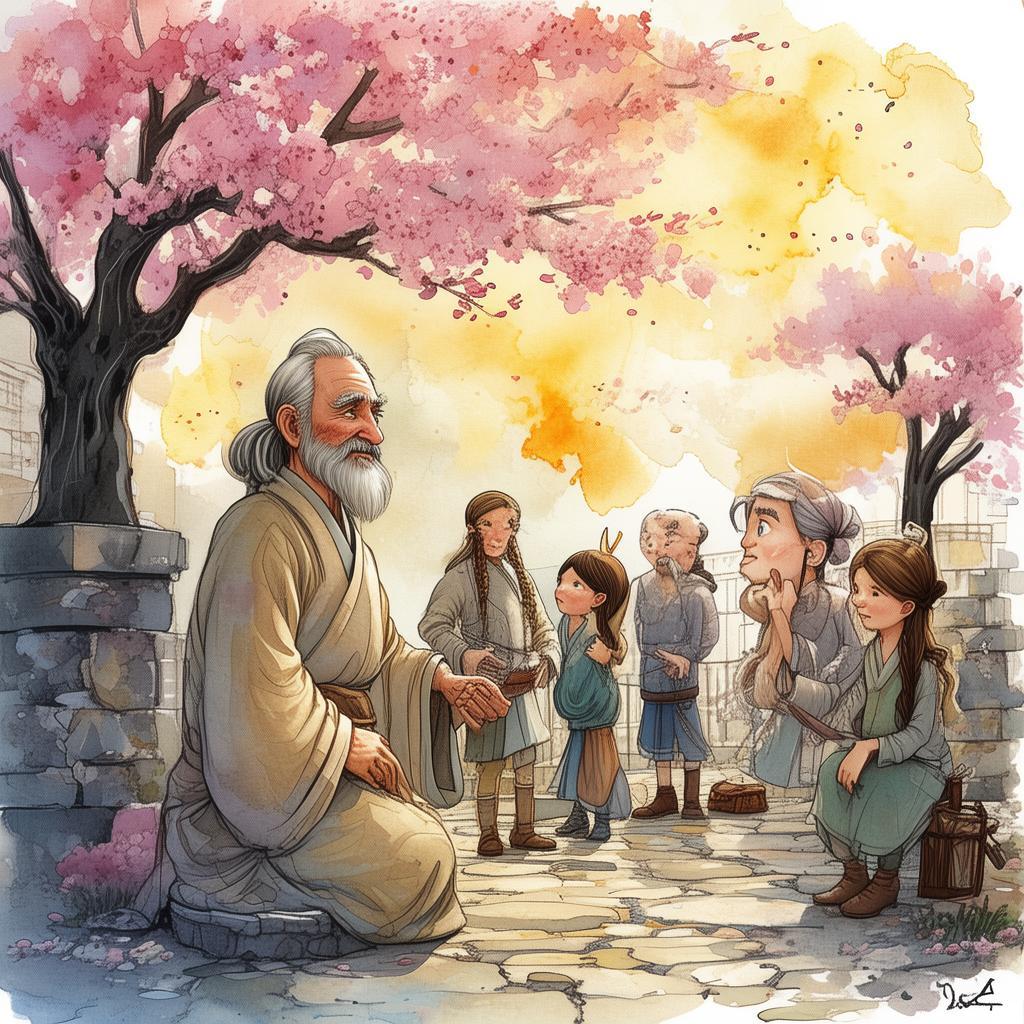The Brushstroke of Eternity: A Painter's Journey Beyond the Veil
In the ancient city of Chang'an, where the Silk Road converged with the celestial paths, there lived a painter named Hua. Hua was not just any painter; his brush had the power to capture the essence of life on canvas. His works were said to have the ability to move the spirits, and many believed his paintings were imbued with the brushstroke of destiny.
Hua's fame spread far and wide, and even the Emperor himself sought his talent. However, as the years passed, Hua grew tired of the court's whims and the constant demand for his art. He longed for a life beyond the mortal realm, a place where his brush could paint beyond the veil of existence.
One evening, as Hua was sketching a delicate blossom, he felt a sharp pain in his chest. His heart stopped, and he knew his time was drawing to a close. With a final stroke of his brush, he etched the image of a celestial gate into the canvas, his last breath escaping as he watched the ink flow into the frame.
The world around him began to blur, and Hua found himself in a realm of ethereal light. He was greeted by a figure draped in robes of shimmering silk, who spoke in a voice like the whispering winds of a thousand years.
"You have reached the threshold of the afterlife, painter of destiny," the figure said. "Your brush has painted not only the world but also the hearts of the celestial beings. Your journey has only just begun."
Hua's eyes adjusted to the glow of the celestial realm, and he realized that his paintings were more than mere art—they were keys to understanding the mysteries of the afterlife. The figure explained that his journey would take him through the realms of the dead, where his brush could unlock the secrets of the past and the future.
The first realm they visited was the Hall of Life and Death, where the records of every soul's journey were kept. Hua's brush, which had once painted the fleeting moments of mortal life, now painted the threads of fate that wove through the afterlife. With each stroke, he saw the choices and consequences that shaped a soul's journey.
In the realm of the Ancestors, Hua's brushstrokes brought forth memories of his own ancestors, their lives and deaths, and the wisdom they had passed down through the ages. He learned that destiny was not a fixed path but a river that could be navigated, shaped by the choices of the soul.
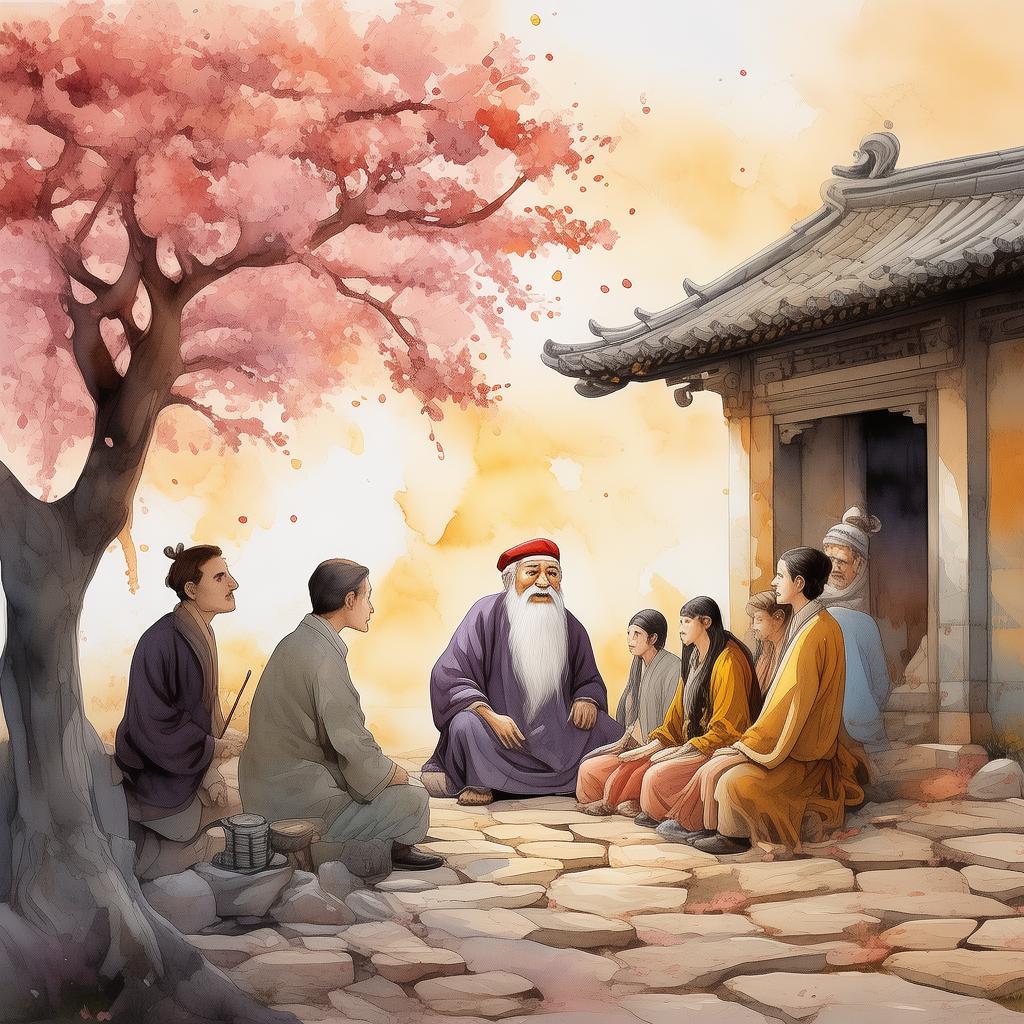
As he journeyed deeper, Hua encountered the realm of the Immortals, where the great artists of the past had created their masterpieces, their brushstrokes now woven into the very fabric of the cosmos. Here, Hua's skills were tested, and he painted the stars themselves, learning to harness the celestial energy that had once coursed through his veins.
Yet, even in the celestial realms, Hua's journey was fraught with challenges. He encountered spirits trapped in the realms of the living, souls whose brushstrokes had been lost or corrupted by the passage of time. With each act of restoration, Hua's own spirit grew stronger, his connection to the brushstroke of destiny more profound.
Finally, Hua reached the realm of the Ultimate, where the greatest mysteries of the afterlife were held. Here, he faced his greatest challenge, to paint the essence of existence itself, to capture the moment when all things become one.
With a deep breath, Hua began to paint. The canvas was the cosmos, and his brush was the universe's own energy. His strokes became the celestial winds, the rivers of the cosmos, and the dance of the stars. As he painted, he felt the universe resonate with his art, and the realm of the Ultimate opened before him.
In that moment, Hua realized that the brushstroke of destiny was not just a talent but a calling, a responsibility to paint the beauty and complexity of existence. With the final stroke, he painted the essence of the afterlife, and the universe responded with a symphony of creation.
As Hua emerged from the realm of the Ultimate, he found himself back in the mortal world, his body rejuvenated, his spirit reborn. He realized that his journey had not ended but had just begun. His brush was still in his hand, and the canvas was the world itself.
From that day on, Hua's paintings were no longer mere representations of life; they were gateways to the afterlife, windows into the soul's journey. And so, the painter of destiny continued his work, his brushstroke now a bridge between the living and the dead, the mortal and the celestial.
And thus, the tale of Hua, the painter whose brushstroke of destiny painted the path to the afterlife, was passed down through the ages, a legend that would forever resonate with those who sought to understand the mysteries of life and death.
✨ Original Statement ✨
All articles published on this website (including but not limited to text, images, videos, and other content) are original or authorized for reposting and are protected by relevant laws. Without the explicit written permission of this website, no individual or organization may copy, modify, repost, or use the content for commercial purposes.
If you need to quote or cooperate, please contact this site for authorization. We reserve the right to pursue legal responsibility for any unauthorized use.
Hereby declared.
